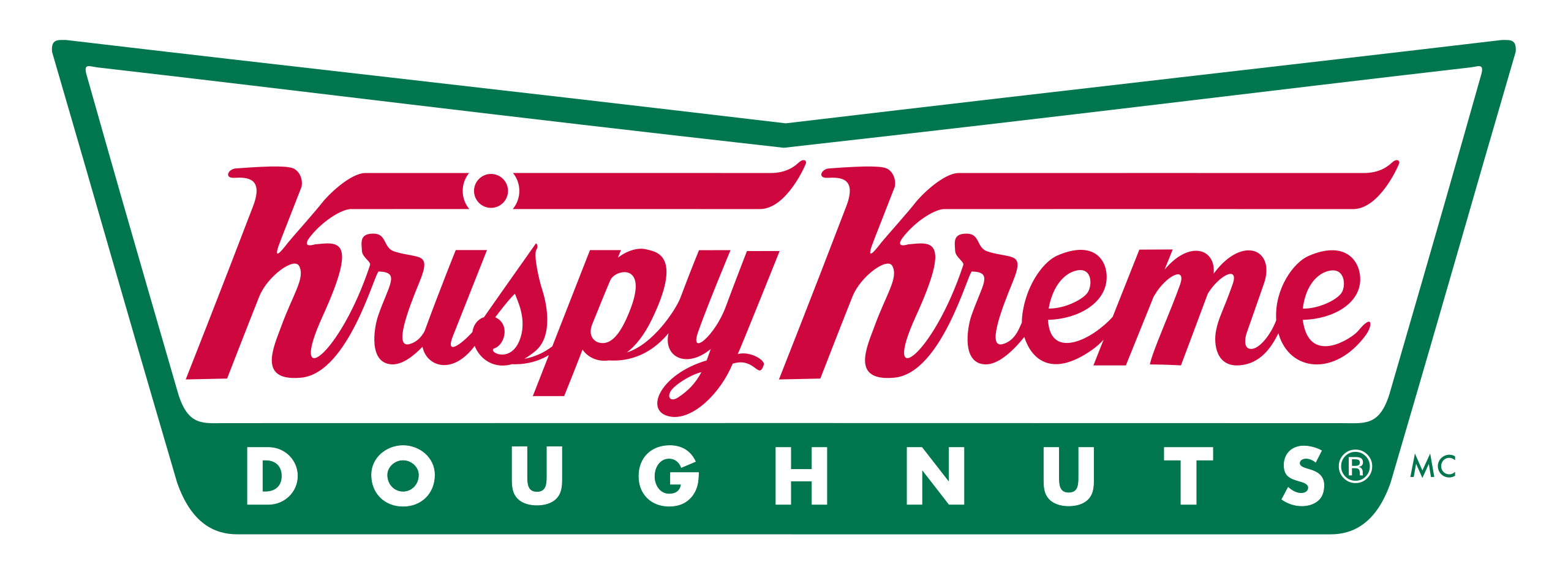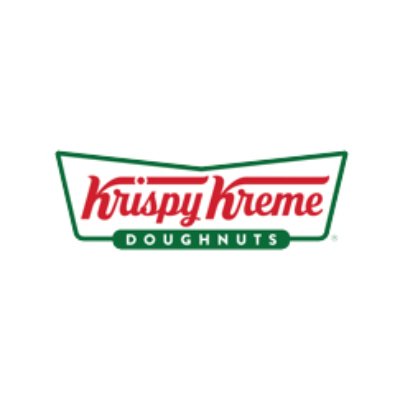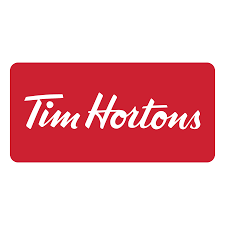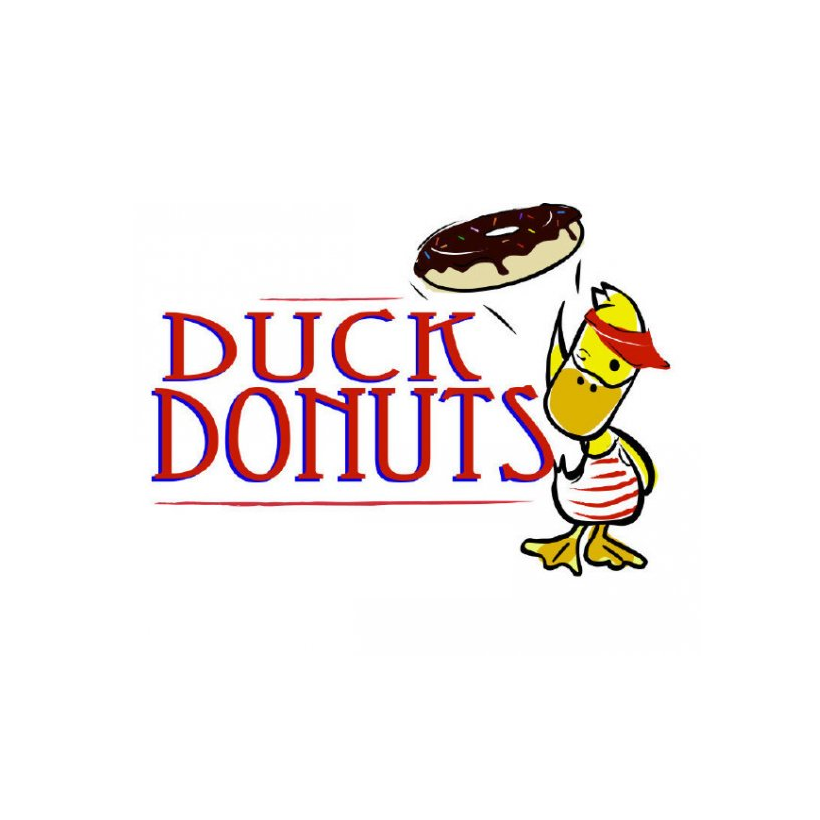Krispy Kreme Franchise in 2025: Costs, Fee & FDD
Considering investing in a Krispy Kreme franchise? Discover the detailed breakdown of costs, fees, and franchise support in our comprehensive analysis. Learn about the brand’s market presence, potential profitability, and whether it’s the right fit for your investment goals.
Table of Contents:
Krispy Kreme is an iconic American brand with a rich history that dates back to 1937. Founded by Vernon Rudolph in Winston-Salem, North Carolina, the company started with a secret yeast-raised doughnut recipe that quickly gained popularity. Over the decades, Krispy Kreme has grown from a single store to a global brand, becoming a beloved name in the doughnut and coffee industry. The brand’s signature “Hot Now” sign is a beacon for doughnut lovers, signaling freshly made, warm doughnuts ready to be enjoyed.
At the heart of Krispy Kreme’s offerings is the Original Glazed Doughnut, a product that has remained unchanged since its inception. This signature doughnut is complemented by a wide range of other doughnuts, including filled, frosted, and specialty options. In addition to fresh doughnuts, Krispy Kreme offers an array of beverages, including coffee, iced drinks, and seasonal specialties. The core customer base spans across demographics, from families to young professionals, who seek a sweet treat or a quick coffee break.
Krispy Kreme has expanded significantly since its early days, with over 1,400 locations across more than 30 countries. The franchise operates in diverse markets, from North America to Asia and the Middle East, serving millions of customers daily. Its strong brand recognition and global presence make it a formidable player in the quick-service restaurant (QSR) segment. The brand’s ability to attract a loyal customer base through its consistent product quality and innovative marketing strategies has been key to its sustained growth.
For potential franchisees, Krispy Kreme offers a robust support system designed to ensure success. This includes comprehensive training programs that cover everything from daily operations to marketing and customer service. Franchisees benefit from ongoing support in site selection, store design, supply chain management, and more. Krispy Kreme also invests in innovation, constantly evolving its menu and services to meet changing consumer preferences while maintaining the brand’s timeless appeal. With a proven track record and a supportive franchise model, Krispy Kreme provides a solid foundation for those looking to invest in the QSR industry.

Krispy Kreme Franchise Insights
- Krispy Kreme serves over 20 million doughnuts globally each day, with its Original Glazed Doughnut being the most popular item, accounting for about 50% of sales.
- The brand operates in over 30 countries, with more than 1,400 locations worldwide, making it a truly global franchise with strong brand recognition.
- Krispy Kreme was publicly traded on the Nasdaq under the ticker symbol “DNUT” as of 2021, highlighting its growth and investor confidence in its business model.
- Krispy Kreme has a strong social media presence, with over 1.5 million followers on Instagram, leveraging digital platforms to engage with fans and drive brand loyalty.
Krispy Kreme Franchise Key indicators
Growth YOY (%)
-9%
vs industry 1%
Total U.S. Franchised Units
123
3-Year Failure Rate
10%
vs industry 11%
Sales-to-Investment ratio
1.3:1
How much does it cost to open a Krispy Kreme franchise?
Understanding the potential investment size and capital requirements is crucial when considering opening a Krispy Kreme franchise. Krispy Kreme franchise cost, including initial franchise fees, equipment costs, and ongoing operational expenses, impact the feasibility and profitability of the venture. Thoroughly evaluating these factors ensures that potential franchisees are prepared for the financial responsibilities and can make informed decisions about their ability to sustain and grow the business, ultimately contributing to long-term success.
Min & Max Investment
Opening a Krispy Kreme franchise involves several key costs, which are outlined in Item 7 of the Franchise Disclosure Document (FDD). You can see a breakdown of the costs to open a Krispy Kreme below from the most recent Item 7 below:
| Type of Expenditure | Minimum Investment | Maximum Investment |
|---|---|---|
| Development Fee | $12,500 | $25,000 |
| Initial Franchise Fee | $12,500 | $25,000 |
| Real Estate and Improvements | $10,000 | $95,000 |
| Construction Costs | $325,000 | $2,860,000 |
| Equipment/Signage/Furniture/Fixtures | $175,000 | $550,000 |
| Truck (if applicable) | $25,000 | $50,000 |
| Initial Inventory | $5,000 | $50,000 |
| Production Equipment (if applicable) | $300,000 | $425,000 |
| Grand Opening Marketing Program | $20,000 | $45,000 |
| Training Expenses | $17,500 | $55,000 |
| Security Deposits and Other Pre-Paids | $5,000 | $150,000 |
| Additional Funds – 3 Months | $40,000 | $125,000 |
| Total Estimated Initial Investment | $622,500 | $4,330,000 |
Item 7 in the Franchise Disclosure Document (FDD) is the “Estimated Initial Investment” section. It outlines the total costs a franchisee can expect to incur when starting a franchise, including the initial franchise fee, equipment, inventory, real estate, and other startup expenses. This section is crucial because it provides potential franchisees with a detailed understanding of the financial commitment required, helping them assess affordability and plan their investment strategy effectively.
Required Capital
To open a Krispy Kreme franchise, the required capital involves both the initial investment costs and specific financial criteria set by Krispy Kreme. Let’s take a closer look below:
- Initial Investment The total estimated initial investment to open a Krispy Kreme franchise can range from approximately $623,000 to $4.33 million. This wide range depends on the type of store format (e.g., hot light theater shop, fresh shop, or commissary) and includes costs like the franchise fee, construction, equipment, initial inventory, and other startup expenses. Assuming that you will finance your Krispy Kreme investment, you should plan to have 20% of the total investment amount in the form of equity (cash) for the investment.
- Liquid Assets Requirement Krispy Kreme typically requires franchisees to have a minimum of $300,000 to $500,000 in liquid assets. This ensures that franchisees have the necessary funds to manage cash flow and unforeseen expenses during the initial phase of operation.
- Net Worth Requirement The overall net worth requirement for a Krispy Kreme franchisee generally falls between $2 million to $5 million. This figure takes into account the value of assets like real estate, investments, and personal property, minus any liabilities. This net worth requirement demonstrates the franchisee’s financial stability and ability to support the business over time.
How much does a Krispy Kreme franchise owner make?
Calculating the salary of a Krispy Kreme franchise owner involves analyzing gross sales to determine total revenue, assessing operational efficiency to understand profit margins, and accounting for franchisor fees and additional expenses such as rent, utilities, and payroll. Effective management of these factors can significantly impact the profitability and financial success of a Krispy Kreme franchise owner. This comprehensive financial analysis helps estimate net profits, from which the owner’s salary can be derived. A clear understanding of these factors ensures accurate salary projections and financial planning for sustainable business operations.
Krispy Kreme Revenue & Gross Sales
Unfortunately, Krispy Kreme has not released updated financial disclosures in their Item 19 in recent years. However, in 2021 Krispy Kreme franchises achieved a median gross sales of $3,096,515, reflecting a significant 41% increase from the previous year. This impressive growth highlights the brand’s strong market presence and potential for substantial returns for franchisees, though it’s important to note that this data is from 2021 and may not reflect current trends.
Which key factors impact the average revenue performance of Krispy Kreme franchisees?
The growth in U.S. franchisee median gross sales revenue for Krispy Kreme in 2021 can be attributed to several key factors. Increased consumer demand for comfort food during the pandemic likely played a significant role, with Krispy Kreme’s nostalgic appeal drawing in customers. Effective marketing campaigns, including limited-time offerings and the iconic “Hot Now” sign, helped drive foot traffic and repeat visits. Additionally, the expansion of delivery and online ordering services made it easier for customers to enjoy Krispy Kreme from home, boosting sales. The brand’s product innovation, strategic store openings, and strong customer loyalty also contributed to this impressive revenue growth.
Krispy Kreme Franchise Operational Costs
When considering the investment in a Krispy Kreme franchise, it’s important to understand the key ongoing operational costs that will impact your business’s financial health. Here are the primary costs you should keep in mind:
- Royalty Fees Krispy Kreme charges an ongoing royalty fee, typically a percentage of your gross sales, which covers the use of the brand and support provided by the franchisor.
- Marketing and Advertising Fees As part of a franchise network, you’ll contribute to national and regional advertising funds. This ensures that your franchise benefits from brand-wide marketing initiatives.
- Labor Costs Staffing your franchise is a significant expense. This includes wages, benefits, and any additional costs related to employee training and development.
- Rent and Utilities Depending on your location, rent can be a substantial cost, along with utilities like electricity, water, and gas to keep the store running smoothly.
- Inventory and Supplies Regularly purchasing doughnut ingredients, packaging, and other necessary supplies is crucial to maintaining operations and ensuring product quality.
- Equipment Maintenance The specialized equipment used in Krispy Kreme stores requires regular maintenance and occasional repairs, which are necessary to prevent downtime.
- Insurance You’ll need to maintain various types of insurance, including liability, property, and workers’ compensation, to protect your business and employees.
- Miscellaneous Operating Expenses These can include everything from cleaning supplies to technology and software subscriptions that help manage day-to-day operations.
These costs are essential to consider as they directly affect your franchise’s profitability and long-term success. Properly managing and budgeting for these expenses will help ensure your Krispy Kreme franchise operates efficiently.
Krispy Kreme Franchise Fees
When evaluating the investment in a Krispy Kreme franchise, it’s crucial to understand the ongoing fees associated with operating the business. Below are the key ongoing fees based on data from 2022 that you should consider:
- Royalties 4.5% of Net Sales, including Fundraising Sales. This fee is payable weekly, typically on Fridays, and will be directly debited from your bank account.
- Transfer Fee $5,000 plus any additional applicable fees and costs (including legal and accounting fees) incurred in relation to the transfer of ownership. This fee is due before the transfer is consummated.
- Opening Team Costs Costs and expenses incurred by Krispy Kreme’s opening team in connection with the opening of your shop, excluding travel, room, board, and salaries. These costs are incurred as specified in the Development and Franchise Agreements, particularly if you’re opening multiple shops.
- Brand Fund Up to a maximum of 2% of Net Sales. Like the royalty fee, this payment is also debited weekly, typically on Fridays.
- Additional Fees There might be other fees associated with specific circumstances or services provided by Krispy Kreme, which should be detailed in your Franchise Agreement.
Understanding these fees is vital for budgeting and ensuring the financial health of your franchise. Properly accounting for these ongoing expenses will help you manage your Krispy Kreme franchise more effectively.
Krispy Kreme Franchise Earnings
In 2021, Krispy Kreme franchisees saw a significant increase in median gross sales, reaching $3,096,515, which represents a 41% increase from the previous year. For an owner-operator, the earnings were estimated at approximately $464,477, also reflecting a 41% increase from 2020. Semi-absentee owners, who might not be as involved in day-to-day operations, had estimated median earnings of $371,582, again with a 41% year-over-year growth.
These figures highlight the strong financial performance of Krispy Kreme franchises during that period, though it’s important to note that this data is from 2021 and may not reflect current trends. Potential franchisees should consider these earnings as an estimate and consult the most recent data to make informed decisions.
How to Open a Krispy Kreme Franchise
Becoming a Krispy Kreme franchisee involves several key steps, from initial inquiry to the start of your business operations. Here’s an overview of the process:
- Initial Inquiry You or your franchise specialist submits an initial inquiry basic information about your interest and background. You should also conduct thorough research on the franchise, including seeing all of the information available on the Vetted Biz franchise intelligence platform, including access to the most recent Franchise Disclosure Document (FDD).
- Application If your initial inquiry is accepted, you’ll be invited to complete a more detailed application. This application will ask for comprehensive information about your personal and professional background, financial status, and reasons for wanting to become a franchisee.
- Qualification Review Krispy Kreme will conduct a thorough background check and financial review. This step ensures that you meet the franchise’s requirements for net worth, liquid assets, and overall financial stability.
- Discovery Day If you pass the qualification review, you’ll be invited to a Discovery Day at Krispy Kreme’s headquarters. This is an opportunity to meet with the corporate team, ask questions, and get an in-depth look at the brand’s operations and culture.
- Franchise Agreement Upon mutual agreement, you’ll sign a franchise agreement that outlines the terms of your relationship with Krispy Kreme, including fees, operational guidelines, and territory rights.
- Initial Franchise Fee Payment After signing the franchise agreement, you’ll pay the initial franchise fee, securing your rights to operate under the Krispy Kreme brand.
- Training Program You’ll participate in an extensive training program, which covers store operations, customer service, marketing, and management. This training is crucial to ensuring that you are well-prepared to run your franchise.
- Site Selection Work with Krispy Kreme’s real estate team to select a prime location for your store. The team will assist in evaluating potential sites and negotiating leases.
- Store Build-Out Oversee the build-out of your store according to Krispy Kreme’s design and operational standards. This phase includes construction, equipment installation, and interior design.
- Pre-Opening Activities Begin the hiring and training of staff, and work with Krispy Kreme’s marketing team to plan your grand opening and initial promotional campaigns. A soft opening is typically conducted to fine-tune operations before the official launch.
- Grand Opening Host your grand opening event, officially launching your Krispy Kreme franchise to the public. This marks the start of your operations.
- Ongoing Support After opening, you’ll receive ongoing support from Krispy Kreme in areas such as operations, marketing, and product innovation to ensure your franchise’s continued success.
Pros & Cons
Pros
Strong Brand Recognition: Krispy Kreme is an iconic and globally recognized brand with a loyal customer base, which can drive consistent foot traffic and sales.
Proven Business Model: With decades of successful operations, Krispy Kreme offers a well-established and proven franchise system, reducing the risks associated with starting a new business.
Comprehensive Support: Krispy Kreme provides extensive training and ongoing support in areas like marketing, operations, and product development, helping franchisees succeed.
Diverse Revenue Streams: Beyond doughnut sales, Krispy Kreme offers additional revenue opportunities through coffee, beverages, and branded merchandise.
Marketing Power: The franchise benefits from national and regional marketing campaigns that increase brand visibility and attract customers.
Cons
High Initial Investment: The startup costs for a Krispy Kreme franchise can be substantial, potentially ranging from $623,000 to $4.33 million, depending on the store format and location.
Ongoing Fees: Franchisees must pay ongoing royalty fees (4.5% of net sales) and contribute to the brand fund (up to 2% of net sales), which can impact profitability.
Competitive Market: The food and beverage industry, particularly the quick-service restaurant (QSR) sector, is highly competitive, which can make it challenging to stand out and maintain market share.
Operational Complexity: Running a Krispy Kreme franchise involves managing multiple aspects of the business, including inventory, staffing, and equipment maintenance, which can be demanding.
Location Dependency: The success of a Krispy Kreme store can heavily depend on its location, requiring careful site selection and market analysis to ensure profitability.




